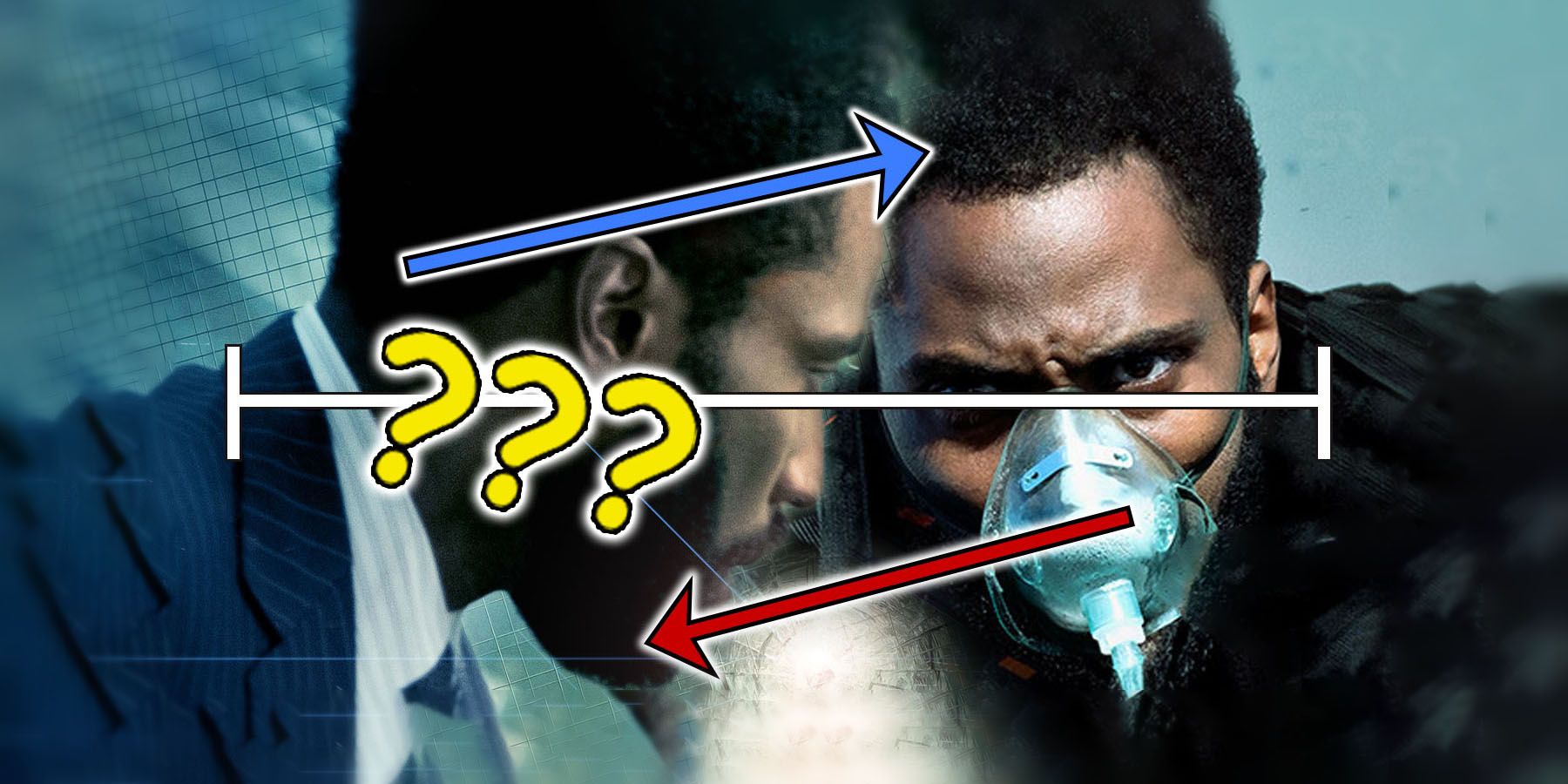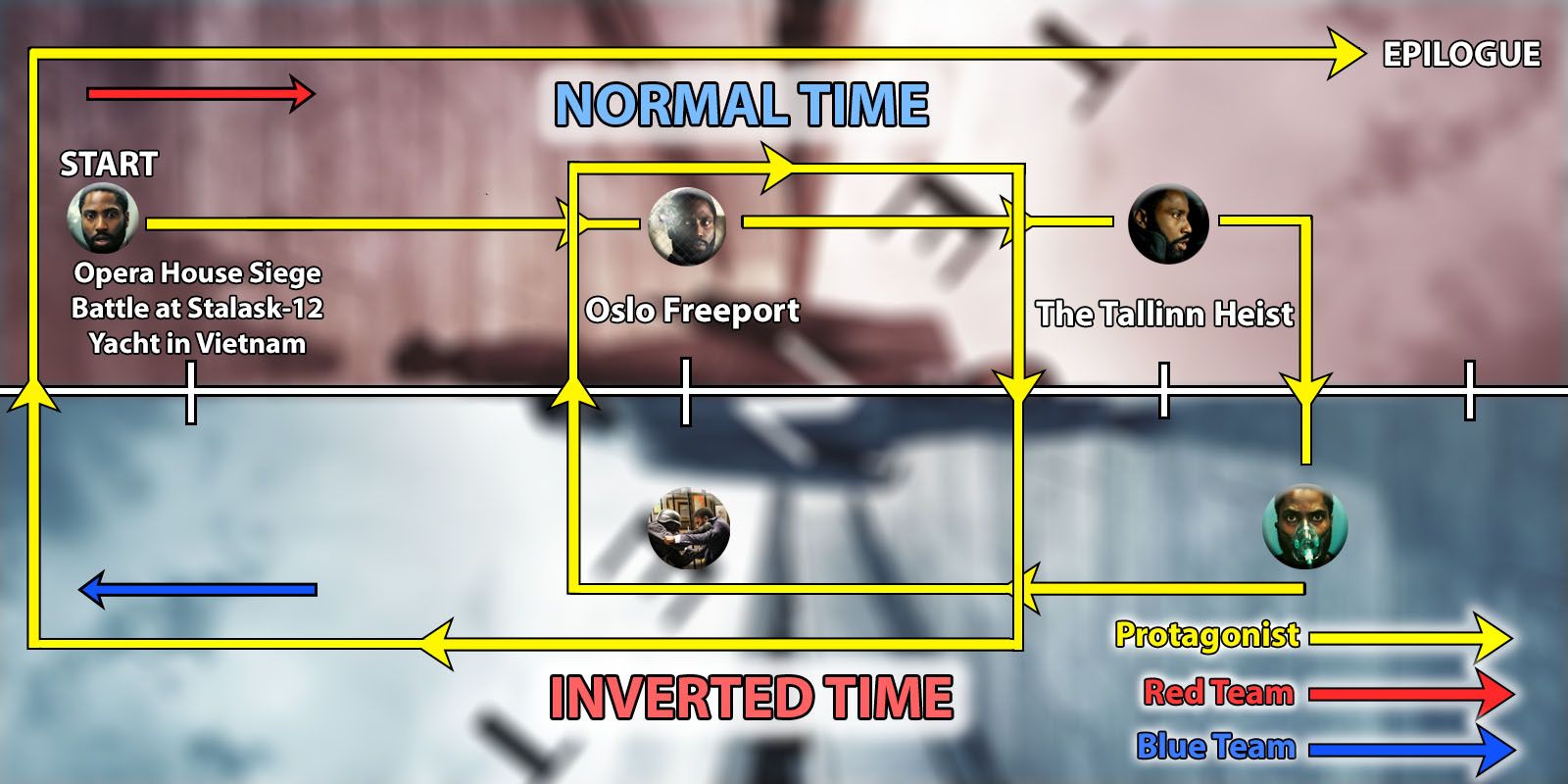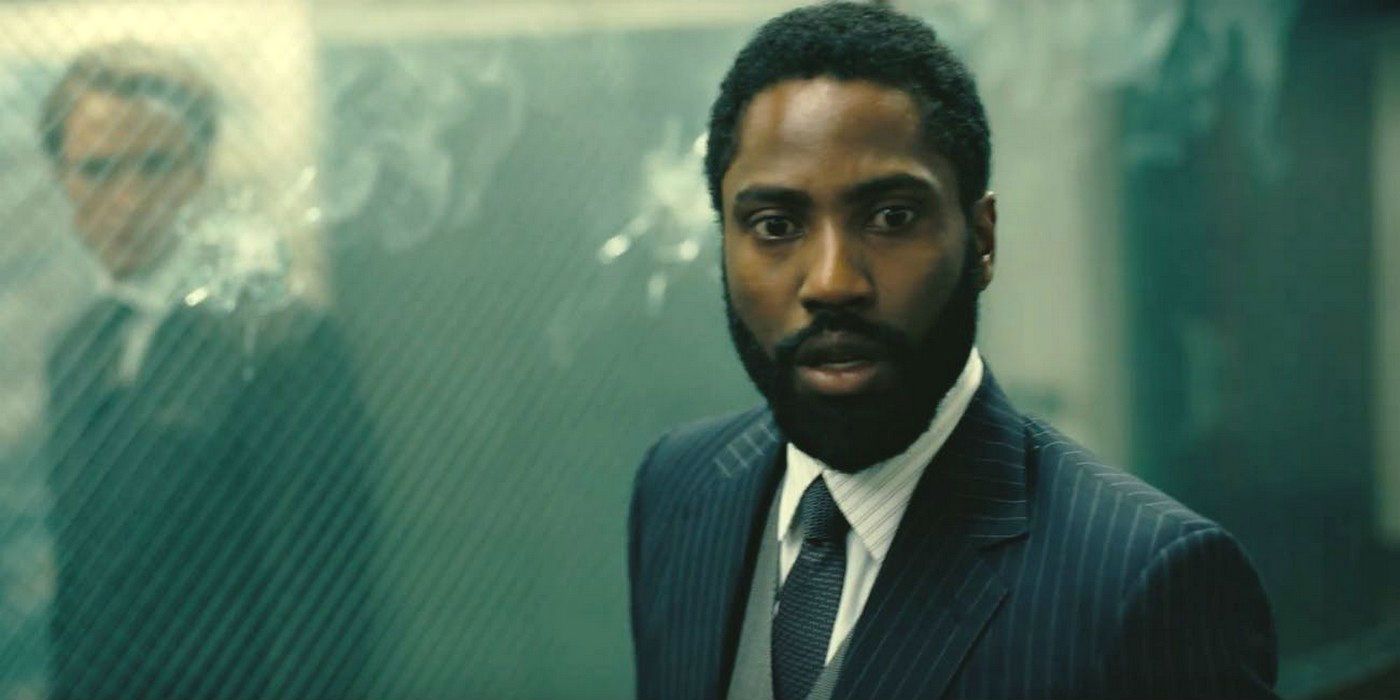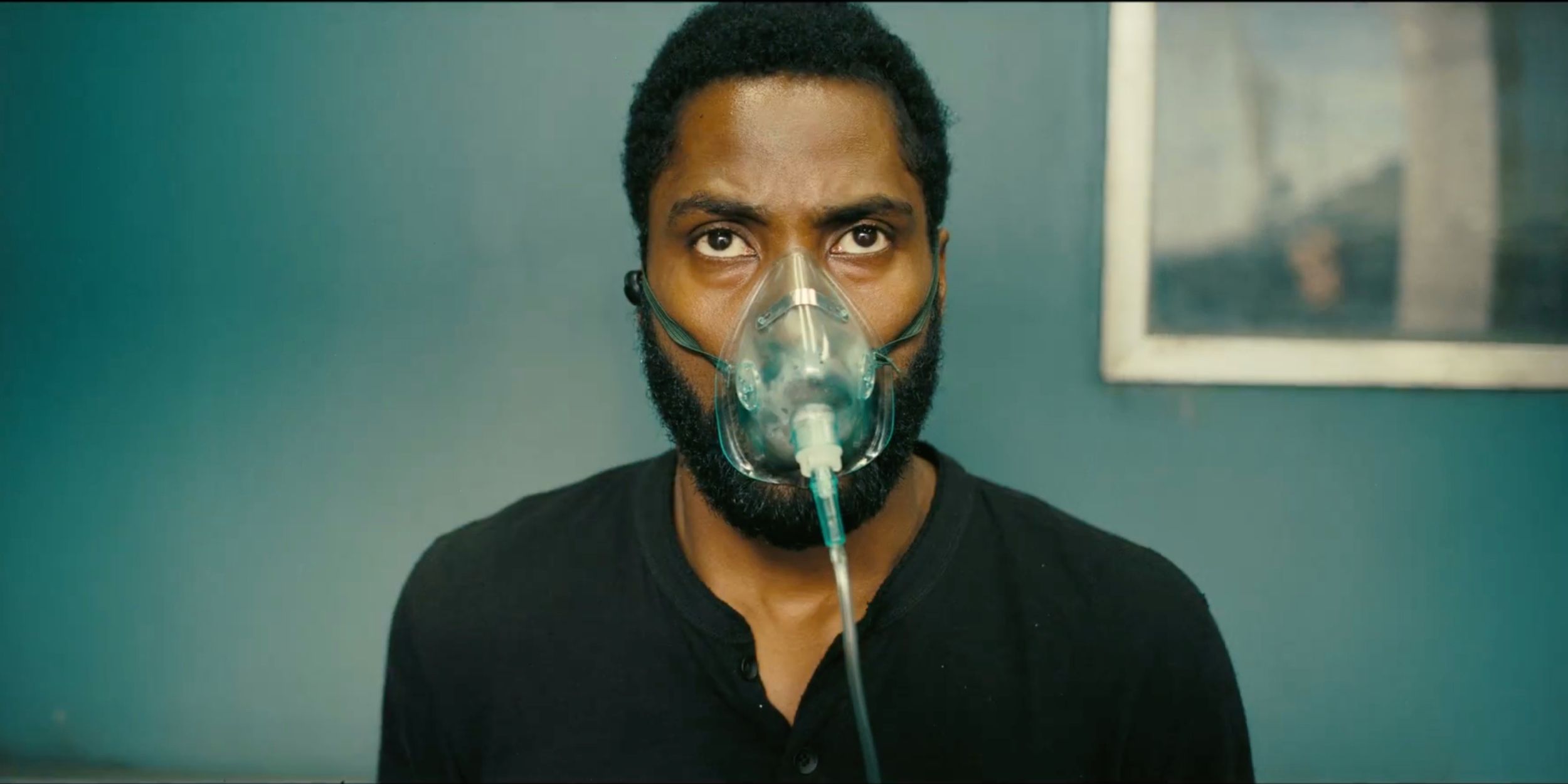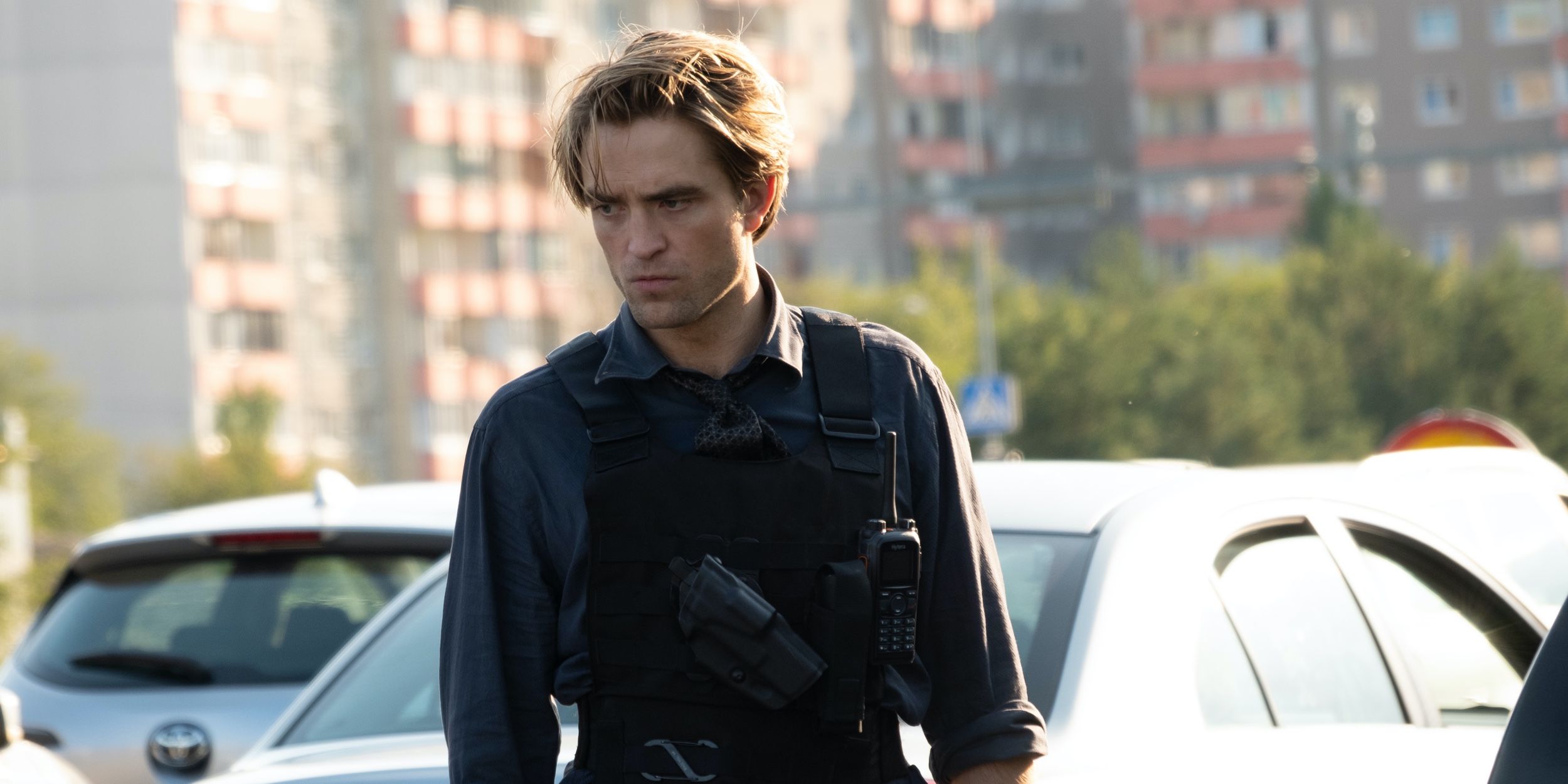Warning: MAJOR SPOILERS ahead for Tenet.
Director Christopher Nolan is known for having unconventional timelines in his movies, but Tenet's central concept of time travel via the inversion of entropy makes for Nolan's most confusing - and fascinatingly layered - timeline yet. John David Washington leads the cast as a man known only as the Protagonist, who is recruited to a top secret organization that's fighting a war against a future enemy.
Nolan first made waves in 2000 with the release of his feature Memento, whose story was told in reverse-chronological order from the perspective of a man with amnesia trying to solve a murder mystery. Nolan's 2010 high-concept sci-fi movie Inception featured a story where events unfold simultaneously but not at the same speed, due to the time dilation on different levels of dreaming. 2014's Interstellar explored the effects of space travel on time, and even Nolan's 2017 war movie Dunkirk had an unconventional timeline. With Tenet, Nolan returns to the field of theoretical physics and turns a hypothesis about the possible inversion of time into a story about preventing World War III.
Like the movie's title, Tenet's story is a palindrome. For the first half of the movie, the Protagonist is travelling forwards in time while experiencing fleeting contact with inverted objects and people. Following a highway heist in Tallinn, Estonia, he goes through a machine called a "turnstile" that inverts the entropy of his body, and he starts to experience the world in a very different way. Here's everything you need to know about Tenet's timeline, and how time travel works in the movie.
Tenet's Timeline & Chronological Order Of Events
Tenet's timeline may be complicated, but the Protagonist's story is told in a straightforward chronological order... at least, from his perspective. Where things get mind-bending is when he inverts and experiences events from earlier in the movie from another angle. In order to keep the story straight, it's better to think of events on the timeline as locations on a map - and there are three major locations that the characters return to.
The most important date in Tenet's timeline is "the 14th" (it's never specified which month this refers to). This is the potential doomsday, when Andrei Sator plans to entomb the Algorithm in order to send it back to the future, where it will be used to destroy the past and present. Three major events in the movie all unfold on this day: the siege of the National Opera House in Kiev that kicks off the movie, Sator and Kat's confrontation on the yacht in Vietnam, and the final battle at Stalask-12. Tenet both begins and ends on the 14th (not including the epilogue).
Then there's the infiltration of Oslo Freeport, where the Protagonist encounters a turnstile machine for the first time and ends up grappling with his own inverted self. The Protagonist has to return to the Freeport turnstile after Kat is shot, because Tenet doesn't take control of a turnstile in the timeline until after the Tallinn heist. Inverting saves Kat's life by giving her time to heal from the inverted bullet wound, but also creates the problem of how to turn around and face the right way again. The Protagonist and Neil use their previous assault on the Oslo Freeport as a window of opportunity to do this.
The final major event is the Tallinn heist, in which the Protagonist and Sator stage a moving robbery of an armored truck in order to obtain the final piece of the Algorithm. Sator inverts at the end of the heist, travels backwards through time and obtains the Algorithm fragment along the way, and remains inverted afterwards - continuing his journey back through time so that the completed Algorithm will be in place on the 14th, and he can die his planned death on the yacht in Vietnam.
How Turnstiles & Time Inversion Work
At some point in Tenet's future, a scientist discovered a means of inverting the entropy of objects using nuclear fission. This technology was used to create a machine called a turnstile, which inverts the entropy of anything (or anyone) placed inside it. That person or object then begins to move backwards through time instead of forwards. By inverting objects using the turnstiles, people in the future can wage war on the past - for example, by burying inverted time capsules that send gold and instructions to Andrei Sator. Because they are working with the benefit of hindsight, the people of the future have a major tactical advantage over the present day. However, time inversion also has its weaknesses - especially when what you're inverting is not an object, but a human being.
A person who has gone through the turnstile is effectively swimming upstream. They might be moving backwards, but everything else is still moving forwards, making the world a disorienting and dangerous place for them to navigate. Even the air is unbreathable, because it cannot pass through the membrane of their inverted lungs (the only way they could "breathe" normal air would be to suck oxygen out of their blood and back into their lungs to reform as unfiltered air and then be exhaled - which sounds like a quick and unpleasant way to die). The heat transfer of fire and ice is also inverted, which is why the Protagonist being engulfed in flames causes him to suffer hypothermia instead of burns.
The turnstiles in Tenet are based on a hypothesis in theoretical physics that was proposed by Richard Feynman and John Wheeler. To recap a little Physics 101, an electron is a particle that holds a negative charge, and a positron is its antimatter counterpart: a particle with the same mass as the electron that holds an equal-but-opposite positive charge. Electrons and positrons are mirror images of each other, and it's traditionally understood that they're two different types of subatomic particle. However, Feynman and Wheeler theorized that what we perceive as positrons are actually just electrons that have reached a point in time where they turned around, and are now coming back the other way with their charge inverted. This could explain why electrons and positrons have the exact same mass: they're the same object.
(Wheeler also came up with another theory, conveyed to Feynman excitedly in a phone call, that there's only one electron in the entire universe, and that all of the electrons and positrons we see are actually just that same electron bouncing backwards and forwards infinitely through spacetime. Don't be surprised if that's what Nolan's next movie is about.)
Neil name-drops Feynman and Wheeler, along with their theory about electrons and positrons, when he and the Protagonist talk after their first time going through the Oslo Freeport. It's a throwaway line and the Protagonist immediately lampshades how complicated the theory sounds - but the audience actually just saw a version of it play out in front of their eyes. In the Freeport fight scene, when the Protagonist first sees the turnstile and a mysterious inverted antagonist bursts out of it and starts fighting him, he believes that the man he's fighting is just some faceless enemy. Later in the film, however, it's revealed that the masked man who came out of the turnstile was also the Protagonist. We're not seeing two people fighting one another, but the same man fighting himself. In this dramatic reenactment of Feynman and Wheeler's hypothesis, the forward-moving Protagonist is an electron and the inverted Protagonist is a positron.
Why Inverted People Can't Touch Their Past Selves
One of the many dangers of inverting is the risk of accidentally encountering your past self. This is a common feature of time travel movies, and characters are typically warned against it because they could end up changing the future. In Tenet, however, the danger comes down to a single word: "annihilation." In physics, annihilation refers to a reaction where a particle (like an electron) collides with its antiparticle (a positron). When this happens, both the particle and its antiparticle disappear and energy is released. Therefore, an inverted person interacting with their past self could cause both versions of that person to be annihilated. This is why Tenet's inverted agents have to wear protective gear.
This principle of annihilation is also what makes the Algorithm the ultimate doomsday weapon. The current state of affairs in Tenet is that the vast majority of the world is experiencing time as normal, and only a few objects and people in it are inverted. As long as those inverted objects and people don't interact with the forward-moving versions of themselves, they are safe. However, the Algorithm would invert the entropy of the entire world. Every particle would be converted into its antiparticle and start to move backwards in time. The moment that happened, those particles and antiparticles would collide, resulting in total annihilation. Not only would everything in the world cease to exist, the ripple effect through time would mean that it never existed in the first place. This, of course, leads to the grandfather paradox.
The Grandfather Paradox Explained
The grandfather paradox is one of the most famous logical problems associated with time travel, and it boils down to this: is it possible to go back into the past and kill your own grandfather? It creates a paradox because if you killed your own grandfather, you would never be born, and therefore you wouldn't be able to go back into the past and kill your own grandfather, which means your grandfather would live, which means you would be born after all, which means you could go back into the past and kill your grandfather etc. When the Protagonist asks Neil what the answer to the paradox is, Neil replies that there isn't one. However, their future descendants believe that it is possible to kill grandpa (i.e. annihilate the past) without the resulting temporal Big Bang destroying them as well.
There are a few proposed solutions to the grandfather paradox, one of which is the multiverse theory: by killing your grandfather, you would create an alternate timeline in which you were never born. However, the version of you that committed the murder would continue to exist, because the timeline that you came from would still be intact. Neil's mantra of "what's happened happened" is an expression of faith in another answer to the grandfather paradox: that the existence of a grandfather in the first place means the plan to kill the grandfather must have somehow failed. Sure enough, Neil and the Protagonist end up successfully averting the future antagonists' plan to kill their ancestors.
Temporal Pincer Movements & 'The Middle' Explained
Tenet's concept of a time war means introducing battle tactics unique to fighting across time as well as space, and one tactic that's used several times is the "temporal pincer movement." In a traditional pincer movement, an army is split in order to attack the enemy on multiple fronts. The goal is to envelop the enemy, putting them in a vulnerable position with no way to retreat. A temporal pincer movement also attacks on two fronts, but in time rather than space. One team experiences the battle in normal time, reporting everything that happens to a second team that's on standby. The second team then inverts via a turnstile and attacks from the opposite direction with the benefit of the first team's knowledge.
Sator uses a temporal pincer movement during the Tallinn heist, which is why the Protagonist's attempt to trick him with an empty case fails. The Sator that he sees holding Kat hostage in the car is inverted, while the forward-moving Sator is waiting by the turnstile with a radio, listening to reports about everything happening on the highway. That's why Sator counts down (or counts up, from his perspective) using his fingers rather than by speaking: anything he said would come out backwards. When the Protagonist throws the case over, Sator already knows that it's empty.
Tenet's soldiers use another temporal pincer movement in their assault on Stalask-12 at the end of the movie. They are divided into two teams: Red Team, who are moving forwards, and Blue Team, who are inverted. The entire battle takes place across the span of 10 minutes, and both teams have the benefit of the other team's knowledge of what happens. This is how, for example, they are able to synchronize the destruction of a building precisely halfway through the fight. The effectiveness of Tenet's temporal pincer movement is neutralized by the fact that Sator's men also have access to a turnstile, and therefore have both normal and inverted soldiers in the field. However, Tenet's goal isn't actually to win the fight, but to make it look like they've failed while Ives and the Protagonist use the battle as cover to secretly remove the Algorithm from its tomb before it's buried by the explosion. Sator will die thinking he's won, but the future antagonists won't get their hands on the Algorithm.
After the battle - as Neil decides to invert again so that he can go back, unlock the gate for the Protagonist and sacrifice his life to save him - he reveals that he's actually known the Protagonist for years. The Protagonist created Tenet in the future, recruited Neil, and set up what is actually a far greater temporal pincer movement designed to stop the Algorithm from going off. As Neil explains, the end of Tenet isn't actually the end of the war, but the middle of it. With the crucial battle won, the Protagonist now has to use his knowledge of how things played out to set in motion all the things that enabled them to win: from founding Tenet, to sending Neil back to help his past self.

